New Renault 5 full details: a 'retro-futuristic' 250-mile electric hatchback with baguette holder
Pain-dering to Francophiles
The original Renault 5 was created in response to the oil crisis of the 1970s. It was designed to be efficient with its fuel — and space — to get buyers on the road in financially difficult times.
Despite such pragmatic beginnings, Renault gave the car personality from the outset, replacing the headlights with cartoon eyes and including a mouth in the bumper in early advertising material, for instance, allowing the car to introduce itself: “Bonjour! Je suis la Renault 5”. The interior was fun, too, and the car became a massive hit, selling some nine million examples over two generations before production ended in the late 1990s.

Little wonder Renault wishes to replicate that car’s success in a reprise of the nameplate.
It first signalled its intention to do so in 2021 with the universally adored Renault 5 Prototype, but few expected the French firm to make a production car that looks so good.
As the new photos show, it has, and what’s more the showroom-bound Renault 5 E-Tech electric — to give it its full name — should be affordable, too.
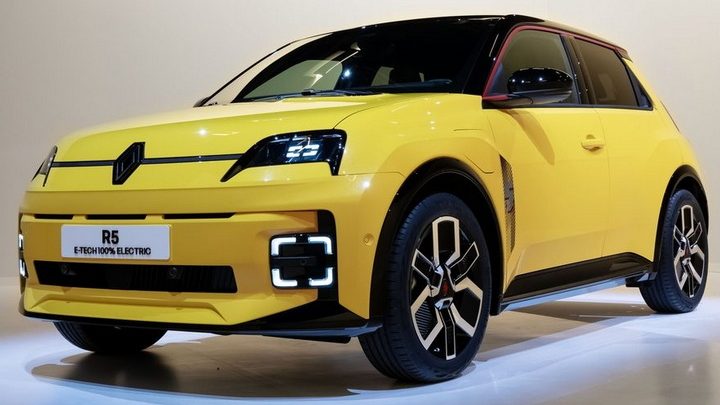
French attention to detail
For those who don’t remember the original “R5” and care nothing for retro detailing, the new car still looks great. It’s modern with a square stance on its standard 18in wheels and there’s exquisite detailing to pore over.
Approach the car with its key in your pocket and the cheerful-looking lights “wink” at you using the distinctive rectangular daytime running light LED signature. That motif is used in the driving lights of the front bumper and even on the air vents inside, too.
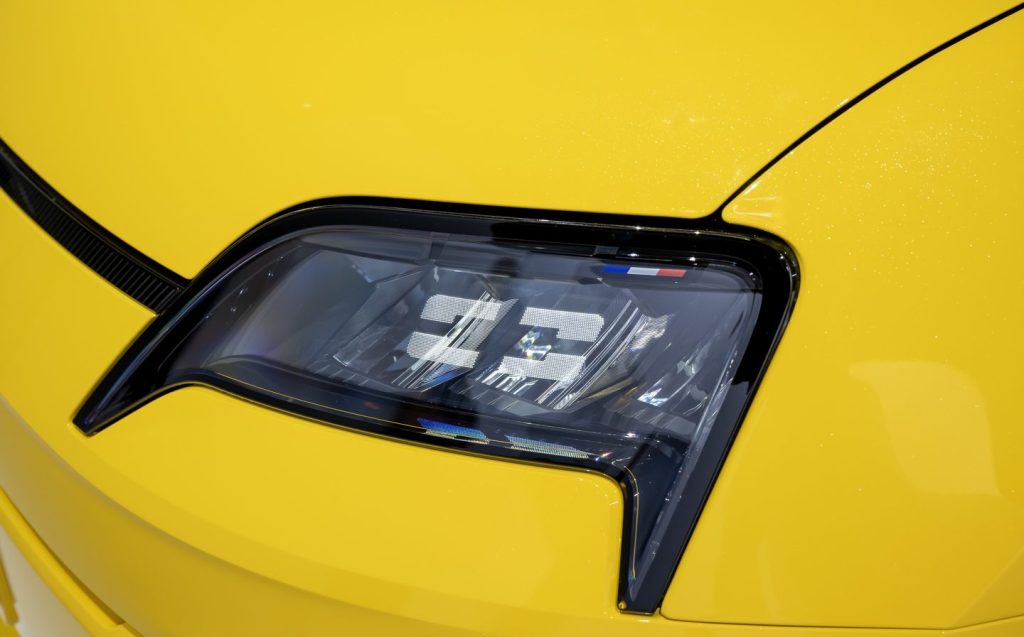
The outline of those front lights is inspired by those of the original, and if you look closer, you’ll see natty little French tricolours within.
Chunky wheelarch sculpting with gloss-black edging gives the R5 a hot hatch-like posture (no doubt set to be emphasised on the Alpine A290 equivalent) and there’s a vent detail behind each of the front wheels with the bold “5” logo inside.
This is a five-door car with generously-proportioned rear doors, and they’re hidden somewhat due to the position of their handles next to the glass and the floating roof design.
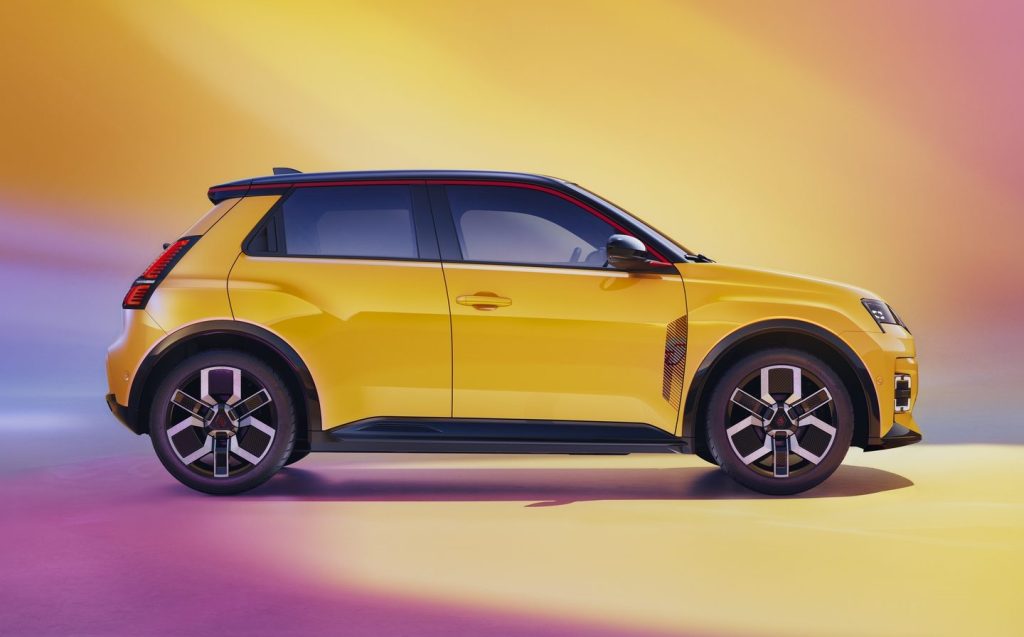
A red pinstripe runs from the black door mirrors over the tops of the side windows and wraps around the rear of the integrated roof spoiler. Renault tells us this references the original’s distinctive rain gully and the spoiler of the wild mid-engined Turbo model. Even if you didn’t know that you’d probably still think it looks good.
It’s the same story with the rear, which is a modern interpretation of the original car’s sloping hatch and long lights at the corners.

These are joined by a black strip and, though the Renault brand is emblazoned across it, there is no Renault diamond badge here — pride of place instead goes to the 5 logo.
That’s also used on the bonnet, in much the same place as there was an air vent on the original. What’s more, it’s functional on the new car, as it lights up in five segments to indicate the level of charge in the battery.
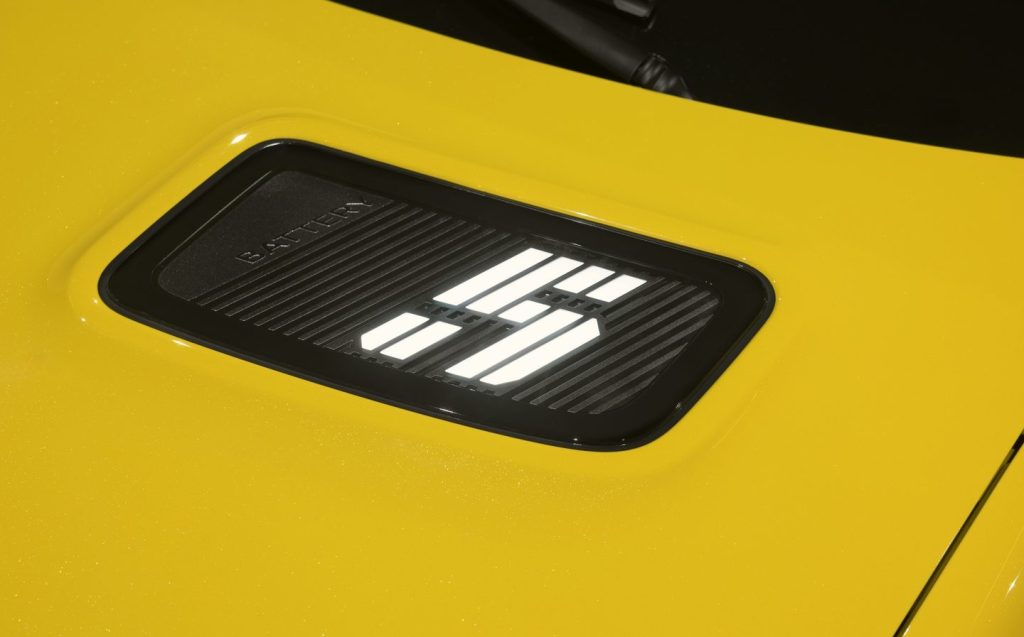
New generation of electric power
The Renault 5 is the first vehicle to use the company’s new “AmpR” electric-car underpinnings, with the battery pack under the floor and a new generation of electric motors. It will initially be made with a choice of two batteries — with capacities of 40kWh and 52kWh — for official ranges of approximately 186 miles and 250 miles, respectively.
The R5 has 11kW AC charging as standard, which is useful for home and work top-ups, as well as rapid 80kW or 100kW DC charging capability, depending on battery size. That means that, regardless of its capacity, the R5’s battery should in theory manage a 15-80 per cent recharge in about half an hour.
Driving the front wheels is a new electric motor based on that of the Renault Mégane E-Tech — though smaller and 20kg lighter. It’ll be available in 94bhp, 120bhp and 148bhp guises with 0-62mph in as little as 7.9 seconds.
Helping acceleration — and the car’s efficiency — is a kerb weight of between 1,372kg and 1,456kg, which is considerably lower than that quoted for most electric cars to date. Lighter cars often feel more nimble through turns, too.
Room for your bread
The Renault 5 is shorter than the current Clio but referred to by its maker as a “B-segment” vehicle — i.e. a supermini in the same class as the Clio and the likes of the Vauxhall Corsa, Citroen C3 and Peugeot 208, all of which now have electric versions.
That’s because, thanks to the packaging advantages of the ground-up electric design (it doesn’t have to accommodate an engine, petrol tank or gearbox), it should feel no less spacious inside than those rivals. It features a flat floor in the rear, improving room for feet, as well as three seatbelts for backseat passengers. It also has a boot with a capacity of 326 litres, which bests the 301 litres of the Clio E-Tech hybrid and isn’t too far off most petrol-powered superminis.
We suspect buyers will be too distracted by the style of the cabin to notice all that, however, as Renault allowed its designers free rein to mix lots of technology with plenty of stylish retro touches and even a new level of personalisation for the brand.
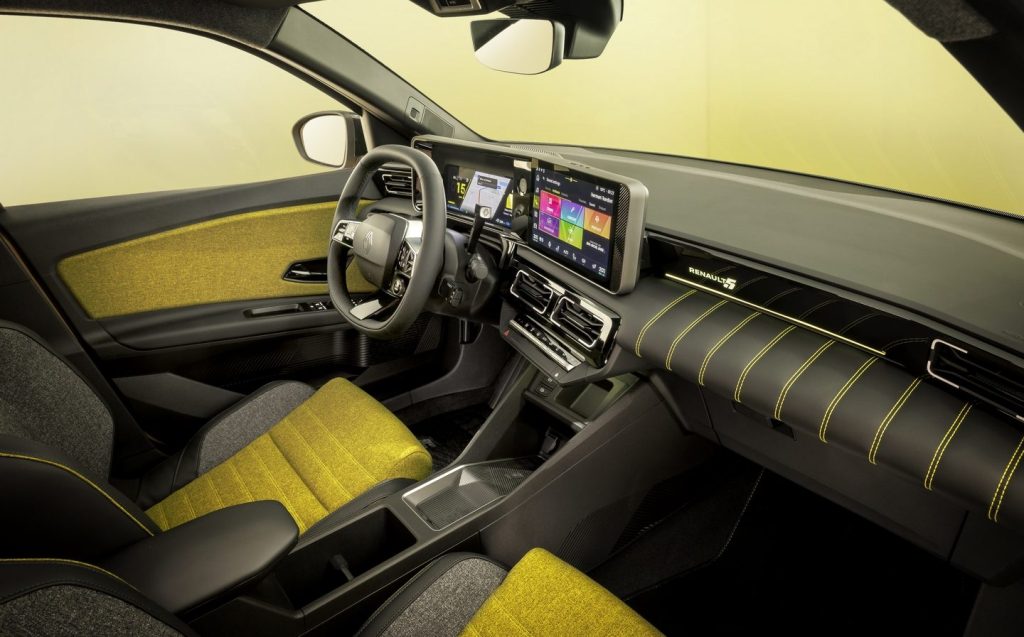
The tip of the drive selector can be swapped, for example, with options including the French flag, another shaped like a Chanel lipstick and another featuring a stylised “WT5”, which we’ll let you work out for yourself. Buyers can even add a woven wicker basket to the cabin, ostensibly to carry baguettes warm from the bakery, or freshly-cut flowers.
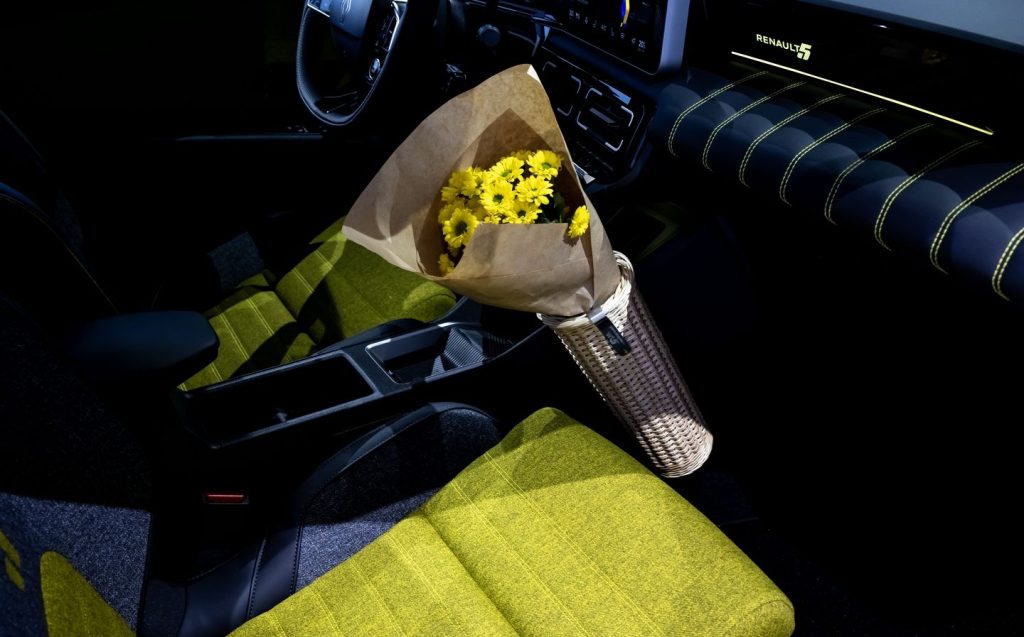
Elsewhere, there are lovely-looking and supportive-feeling front seats inspired by those of the original 5 Turbo (upholstered in a denim fabric made from recycled materials) and a tactile padded dashboard with contrast stitching.
Within this sits the new digital setup encompassing the instruments and a 10in touchscreen with Google built in and Renault’s new “Reno” digital avatar. A final flourish is the textured headlining.
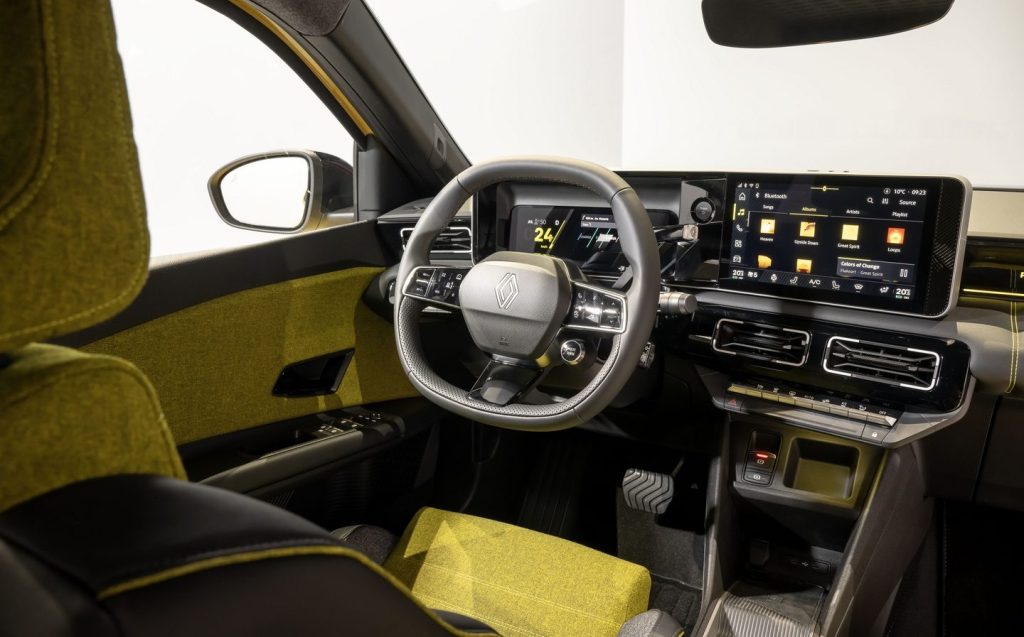
The colours and materials used vary depending on trim level, and there will be at least one special version launched each year with unique equipment and colours to keep interest alive. The launch variant is called the Iconic Cinq, for example, though it has yet to be confirmed if that will be part of the UK offering.
UK pricing not yet known
Although UK pricing for the new Renault 5 has yet to be announced, it is expected to cost under £30,000. Keen buyers can pay for an “R-Pass” now, for £150, allowing them to put their order in 10 days before those without the pass. Deliveries of the new Renault 5 should commence in the first quarter of 2025.
Related articles
- If you were interested in the new electric Renault 5, you might like to read about the reinvention of the Renault Scenic as an electric SUV
- Read Will Dron’s comment piece on perhaps the most overlooked reason that private buyers are turning away from electric cars
- And we’ve looked at the question, will electric car prices go down in 2024?
Latest articles
- testing schedule 2
- test schedule
- F1 driver Lando Norris commissions bespoke open-top Land Rover Defender
- Citroën C3 and e-C3 2024 review: Petrol or electric, bow down before the new king of value cars
- Best-selling cars 2024: The UK’s most popular models
- Fourth-generation BMW 1 Series shows its new face with all-petrol line-up for the UK
- Cupra Tavascan 2024 review: Funky electric SUV continues Spanish brand’s EV roll
- Divine intervention? Trump-supporters’ motorhome destroyed after rolling into telegraph pole
- Extended test: 2023 Vauxhall Astra Sports Tourer GS PHEV





















